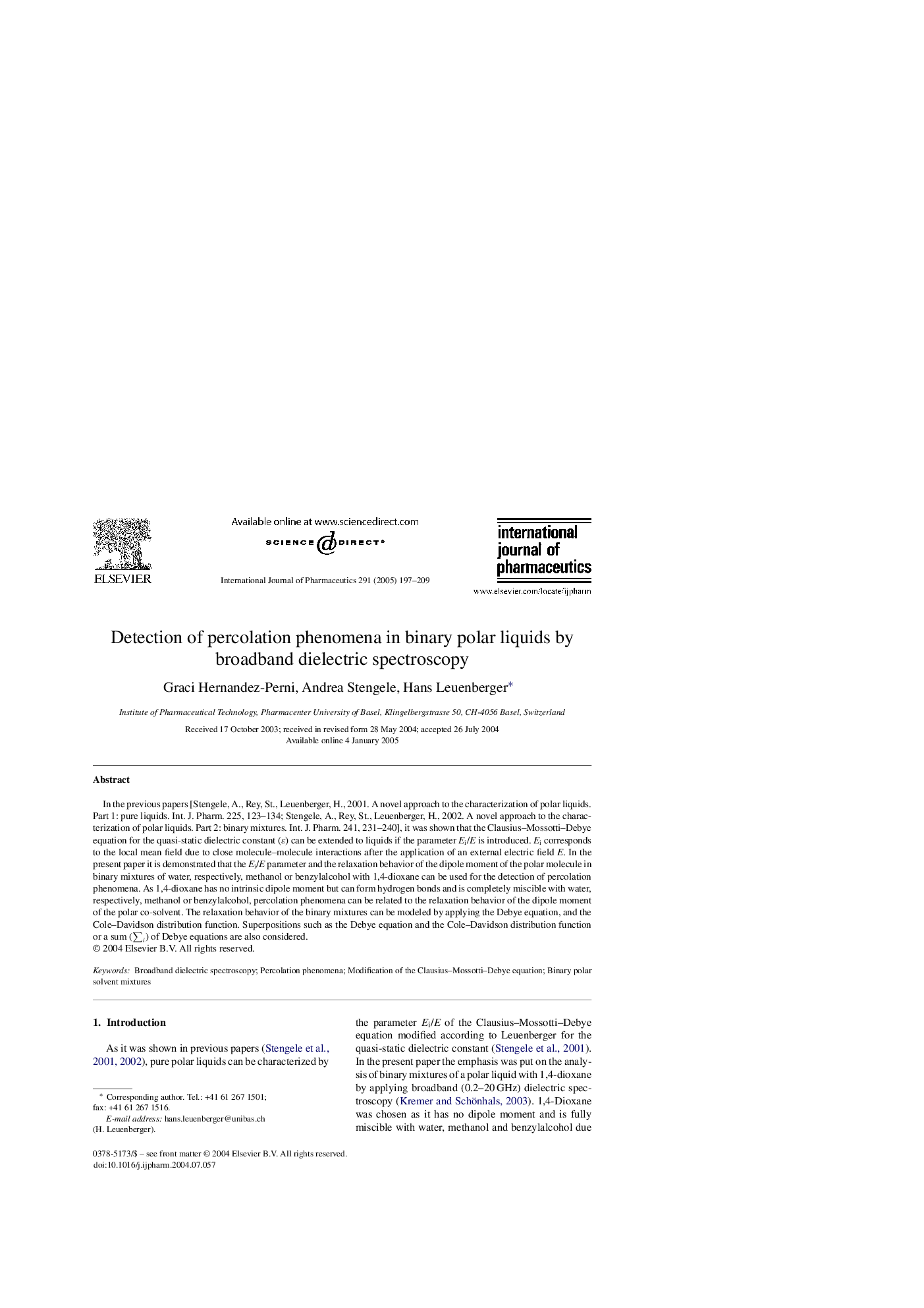| Article ID | Journal | Published Year | Pages | File Type |
|---|---|---|---|---|
| 9918943 | International Journal of Pharmaceutics | 2005 | 13 Pages |
Abstract
In the previous papers [Stengele, A., Rey, St., Leuenberger, H., 2001. A novel approach to the characterization of polar liquids. Part 1: pure liquids. Int. J. Pharm. 225, 123-134; Stengele, A., Rey, St., Leuenberger, H., 2002. A novel approach to the characterization of polar liquids. Part 2: binary mixtures. Int. J. Pharm. 241, 231-240], it was shown that the Clausius-Mossotti-Debye equation for the quasi-static dielectric constant (É) can be extended to liquids if the parameter Ei/E is introduced. Ei corresponds to the local mean field due to close molecule-molecule interactions after the application of an external electric field E. In the present paper it is demonstrated that the Ei/E parameter and the relaxation behavior of the dipole moment of the polar molecule in binary mixtures of water, respectively, methanol or benzylalcohol with 1,4-dioxane can be used for the detection of percolation phenomena. As 1,4-dioxane has no intrinsic dipole moment but can form hydrogen bonds and is completely miscible with water, respectively, methanol or benzylalcohol, percolation phenomena can be related to the relaxation behavior of the dipole moment of the polar co-solvent. The relaxation behavior of the binary mixtures can be modeled by applying the Debye equation, and the Cole-Davidson distribution function. Superpositions such as the Debye equation and the Cole-Davidson distribution function or a sum (âi) of Debye equations are also considered.
Related Topics
Health Sciences
Pharmacology, Toxicology and Pharmaceutical Science
Pharmaceutical Science
Authors
Graci Hernandez-Perni, Andrea Stengele, Hans Leuenberger,
